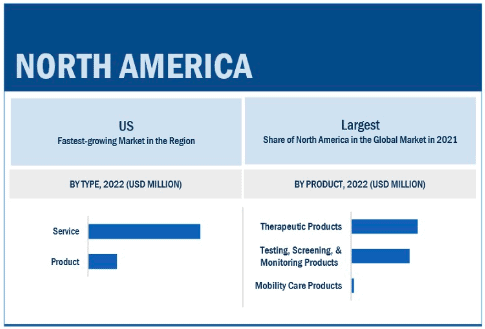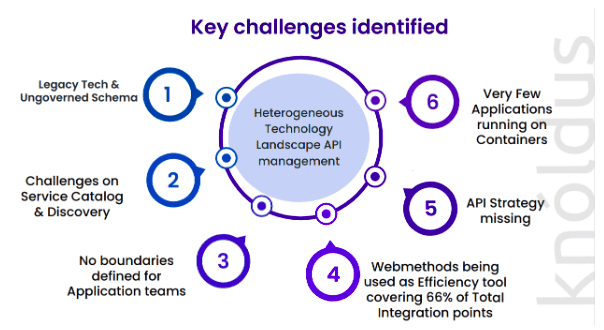Reliable API management
Introduction

Within five months of the solution’s launch, Amway began utilising the new platform. Looker is frequently used in business today to comprehend safe, highly accessible business applications and give data for on-demand application usage.
About Amway
Amway is an entrepreneur-led health and wellness company based in Ada, Michigan, U.S. In more than 100 nations and territories around the world, Amway is dedicated to assisting people in leading better, healthier lives. They rank among the Top 50 privately held, family-owned businesses in the US, according to Forbes magazine. Amway’s most popular brands are NutriliteTM, ArtistryTM, and XSTM; all are solely distributed by business people known as Amway Business Owners (ABOs).
North America accounted for the largest region of the home health care market, by regions.
The global home healthcare market, in terms of revenue, was estimated to be worth $226 billion in 2022 and is poised to reach $340.2 billion by 2027, growing at a CAGR of 8.5% from 2022 to 2027.
According to David Cutler, Professor at Harvard school of public health, the aging population, increasing rates of target diseases like dementia and Alzheimer’s, and orthopaedic diseases are all predicted to drive market expansion. Governments and health organisations are working to reduce healthcare expenses since one of their top worries is the rising cost of treatments. An affordable alternative to an expensive hospital stay is home healthcare.

North America dominated the market with a revenue share of more than 40% in 2021. Some of the important variables include the region’s sizable aging population, advanced healthcare infrastructure, and relatively higher levels of disposable income. Its significant market share is also being boosted by increasing government initiatives attempting to reduce healthcare costs by boosting home healthcare. For instance, the Hospital at Home programme, which allowed patients to get care at home and cut the cost of care by about 30%, was implemented.
Problematic statement
As a market leader, Amway management needed robust, highly available, secure, and cost-effective multiple service applications management, that helps them understand the productivity and business value delivered on a daily and sometimes hourly basis.
On the one hand, this study called for a complex examination of the activity carried out in real-time product management, which helped spot problems early on and guarantee that customers’ deadlines were reached. On the other hand, give the development team an ease to focus only on business needs in application development.
The difficulty lies in maintaining the existing multiple internal applications API’s. The current API gateway platform will not be able to meet the growing needs of Amway, and a suitable alternative needs to be selected with all those capabilities that mashery is lacking.
Amway required a restructuring in their existing API management and migration to a new SaaS based platform and needed a proper automated process to update APIs of Various applications so that their internal applications get highly available and secure simultaneously. So that development can focus only on the business needs of the application.

Roadmap
Our team spent the first several days becoming acquainted with internal applications and gaining the domain expertise necessary to begin the architectural process. Engineers have undergone sufficient knowledge training. An onboarding document was created, and the knowledge is documented in confluence.
Our team then took a few days to comprehend Amway’s procedures and understand the development process, CICD standards, infrastructure standards, documentation standards, approval processes, etc.
Initiating the “MVP” exercise, we held a series of workshops with key stakeholders to identify goals, success criteria, vision, approach, communication standards, and Agile processes. With the necessary background knowledge and an awareness of the processing burden. A backlog is created, and a high-level road map for the following few sprints is created.
The following step was architecture release, during which we carried out a number of analyses of the tech stack and available alternatives to choose the most effective strategy. In a single sprint lasting two weeks, we constructed the fundamental parts while making a number of technical choices.
Architecture
The architecture required addressing the following points while migrating the current Amway API management to the new platform.
- Data Privacy
- Scalability
- Availability
- Performance
- Security
- Geographical Routing
- Analytics Reporting
- Ease of Migration
The aforementioned points and diagram guided Jira and Epics and gave a sense of the tasks involved in migrating and how to order them. All of these elements are predetermined to be within the scope of the Google Cloud suite of services.
Retrofitting the business application to produce denormalised business events is one of the crucial choices. This choice is taken in light of the “impedance mismatch” between a database replication and the analytical system once the initial round of POC is completed using Google Datastream.
The second was a choice to continue with all of the Google-provided solutions to make spreading technology easier. The choice to use cloud armour and APIGEE. The creation of a CI/CD for API deployment and a dashboard for API development history, which will aid in understanding “What happened” rather than simply knowing what is, is the third and most crucial architectural choice. This resulted in a number of benefits, each of which merits its own case study. Simply put, the event store supported use cases that needed queries like “As of this date and time,” as well as a “trustworthy” source of data that systems could rely on.
Using free source tools for API restriction as well as bash scripting with elastic search for build history log shipping and git log history to create dashboards for the analysis were some of the quick selections taken, using the Salt security platform as a second layer of security.
The entire solution is driven by DevOps (all infrastructure is built using Terraform and is inspired by the Google Cloud foundation toolkit), and all CICD pipelines are built using Jenkins and the ELK Stack for logging.
Structured logging, maintained by GCP Analytics with the GCP metrics infrastructure, and alerting are used to provide a robust monitoring and alerting system. Email notifications were created so that users may immediately get alerts and address problems.
Results
Within five months of the solution’s launch, Amway began utilising the new platform. Looker is frequently used in business today to comprehend safe, highly accessible business applications and give data for on-demand application usage. APIGEE’s scalability offers the necessary elasticity and speed. The table below shows that we saved around 2,30,000 USD of Amway by migration.

Want to deep dive into how we handled critical challenges like cloud-to-cloud migration, and API platform migration? Send us an email and we will be happy to help you achieve your business goals using cloud-based solutions.
Read more case studies
Accelerating transformation with Digital MGA innovator, Ripe
Ripe partnered with NashTech to accelerate the migration of data and products from their legacy platform, freeing their in-house team to focus on developing new products, a critical part of their...
Markerstudy Distribution’s Successful Partnership with NashTech
MSD’s relationship with NashTech has proven to be a game-changer, helping them scale their development capabilities, access cutting-edge technologies, and maintain a competitive edge in the...
Markerstudy Distribution’s Lakehouse Data Transformation Journey with NashTech
Partnering with NashTech, Markerstudy Distribution sought to leverage offshore expertise to ensure consistent and efficient delivery of their Data Lakehouse project, overcoming the complexities of...
Let's talk about your project
- Topics:
Our partnerships















